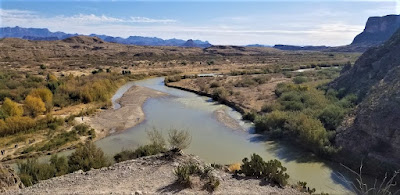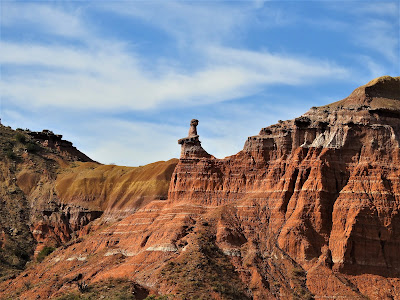Welcome back to AwayWeGo's Traveling Adventures. We've got the motorhome in the small town of Bridger, Montana. It's just up the road from the Pryor Mountains where my next job assignment is located. With my coworker being delayed in getting here, and he's bringing all the survey equipment, I have a free week or so to go exploring and geocaching. Today I'll show you some Bridger history. I also take a drive down to the jobsite at Pryor Mountain to do some Jeep off-road trail exploration. So hop in and let's go for a ride.
Bridger started out as a mile long alley of hastily built wooden shacks and businesses called Stringtown. They didn't have indoor water, no electricity, not even a wooden plank sidewalk to keep from walking through the wet mud or dry dust. But hundreds of people came for an opportunity to work in the coal mines or a job on the railroad. Calamity Jane even lived here in the early days of Stringtown, taking in laundry to earn a living.
Jim Bridger, born in Virginia in 1804, arrived in Montana in 1822 as a member of the Rocky Mountain Fur Company brigade. He roamed all throughout the Rocky Mountain region, trapping and exploring. A keen observer, a natural geographer and with years of experience amongst the Indians, he became invaluable as a guide and scout for wagon trains and Federal Troops following the opening of the Oregon Trail. He spoke several Native American languages, as well as being able to converse in French and Spanish, and was often called upon to negotiate disputes between the Native Americans and encroaching white settlers. In the 1860's Bridger moved down to Missouri and lived until his passing in 1881.
A post office was established on October 29, 1898. In 1902, Stringtown was renamed Bridger and incorporated in 1907. There are two geocaches in town. One at the Jim Bridger statue above (GCW1BR) and the other at the Veterans Memorial Park below (GC3NQEP).
From there I drove south on US-310 down to the town of Warren, and then north on the gravel Railroad Bed Rd up through the Pryor Mountain Wind Farm. Now I know where the jobsite is and how long it takes to get here.
Going past the wind farm, I continue on the gravel road up towards the mountains. The next geocache was at an old kiln site (GC6VTX9). This lime kiln was used by many of the early settlers of the nearby ghost town of the Bowler Flats area in the building of their homesteads from the 1890's to the 1930's. Not too far away on the other side of the hill was another geocache at a quarry site (GC7MF00).
Just past the quarry I come to a fork in the road. I can continue north on Railroad Grade Road or turn east onto Pryor Mountain Road, which has this sign. Well I think it's obvious which road I take the GeoJeep onto.
About a half mile down I spotted this mound with some rocks and a stick off to my right. My first thought was an old pioneer gravesite. Upon closer inspection and thought, it was more than likely a surveyors property corner. Probably set a hundred years ago.
I continued up the mountain on the way to a cave where the next geocache (GC7MF3E) was hidden.
The higher you go, the rougher it got. I don't make videos very often, but this time I remembered to give it a try.
I made it up to the cave. Unfortunately, I didn't find the geocache.
I wanted to continue going up the mountain and do some more exploring. But when you're out here all by yourself, miles from anywhere, it's getting late and you loose phone service, I can't take too much risk. So, back down the mountain...
Back down on the "Flats," I continue on to one more geocache (GC7MF44) before it's time to head back to civilization.
Taking a different route back out to US-310, I passed by this old homestead that made for a great photo.
To follow along on our travels and keep up with my latest blogs, you may do so here of course by clicking the "Follow" button to the right. And there's also my main website at AwayWeGo.US for the complete index of my traveling adventures going back to 2005. But also by using one or more of your favorite of these social media platforms: Facebook, MeWe, Gab, Reddit, Twitter, GETTR, Instagram, and TruthSocial. These all link directly to my profiles. Again, please feel free to comment and / or share.






























































